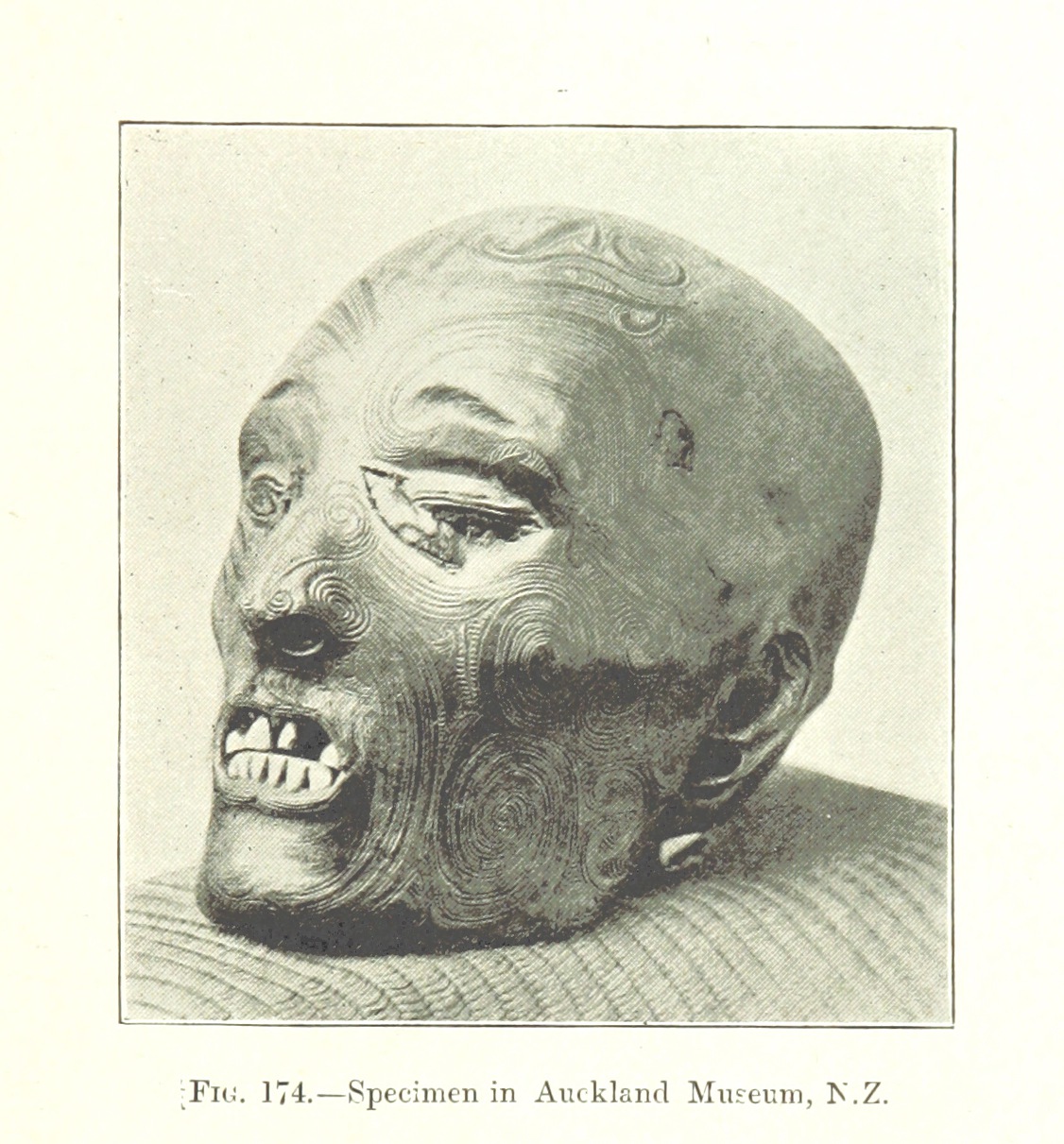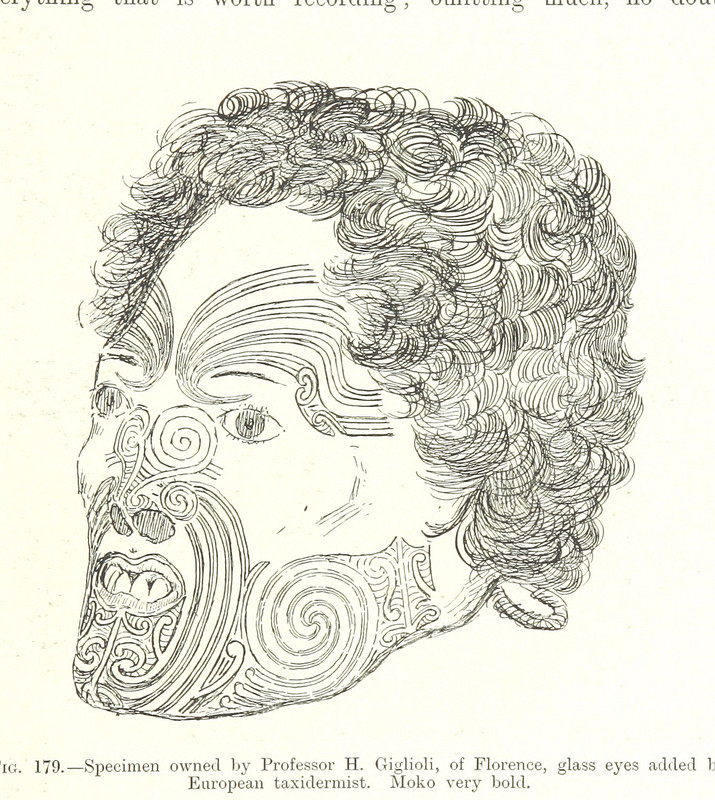Sometimes, as with the Royal Asiatic Reader, this blog travels to other regions in search of stories that explain or dramatize aspects of colonialism also important for the Middle East. Today this brings us to the subject of Mokomakai, the preserved heads of dead Maori that were traded extensively by Englishmen in the early 19th century. (You can read in more depth about the Mokomakai trade in Major-General Robley's 1896 work on the topic, from which the photo at left is taken, or in this more recent summary)
In short, Maori had long dried and preserved the heads of dead relatives, for veneration, and enemies, on occasion, as trophies of war. Arriving in the late 18th century, English sailors began purchasing the heads as curios, then selling them to ethnographers, naturalists and collectors back in England. In order to meet European demand, traders began buying up more and more heads, often in return for the muskets that Maori needed to fight increasingly vicious local wars. Tribes with muskets used them to defeat rival tribes, whose heads they then sold, while tribes without muskets sought to acquire heads that they could trade for much needed arms to defend themselves. The result was that while the elaborate facial tattoos prized by head collectors had once been reserved for social elites, Maori began tattooing their slaves before killing them so their heads would fetch higher prices. European buyers were reported to have even selected future specimens from among still-living slaves.
In the 1830s the British Governor General in Australia officially banned the practice, but by then it largely died out - the Maori market was saturated with muskets and the European market was saturated with heads. As in so many cases, colonialism had introduced new technologies and market pressures that radically transformed local societies, in this case with particularly brutal results. Beyond this, though, the example of Mokomokai seems to exemplify one of the most provocative but often hardest to articulate arguments found in Orientalism: that the power dynamic between colonized and colonizer was such that European perceptions of Oriental subjects had a self-fulfilling quality, often becoming reality without either party fully realizing it. In this example, Europeans misinterpreted particular Maori embalming practices, seeing them as an example of widespread primitive savagery. Their semi-scientific fascination with these practices, coupled with their wealth and military technology, created the circumstances in which this previously restricted practice truly became something widespread and barbaric. All without the heads' wealthy European purchasers realizing that they were responsible for much of the savagery they believed that they were simply documenting (and then took credit for suppressing)






